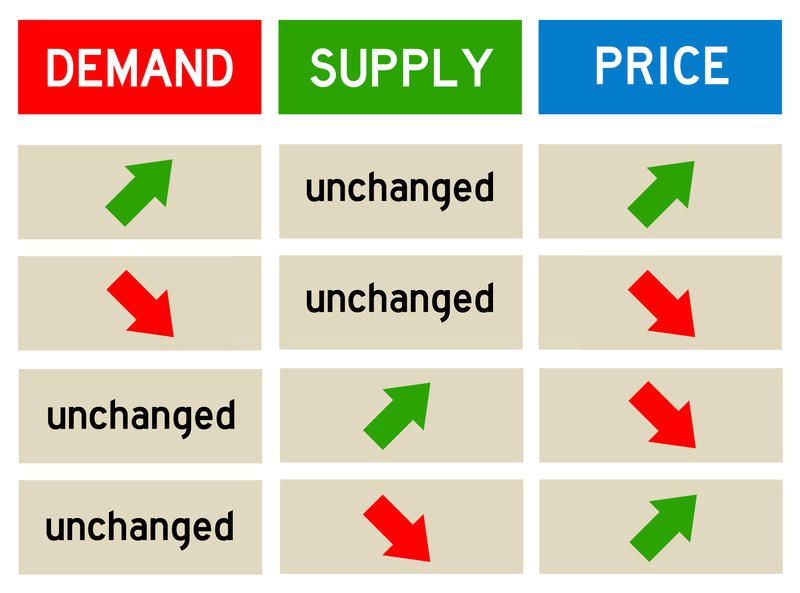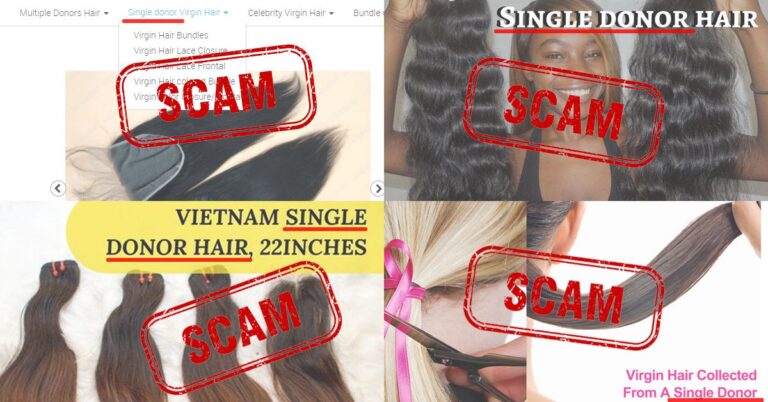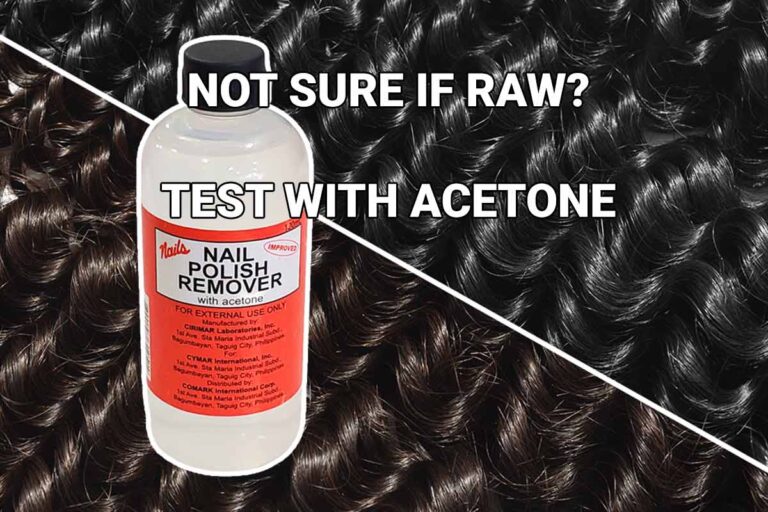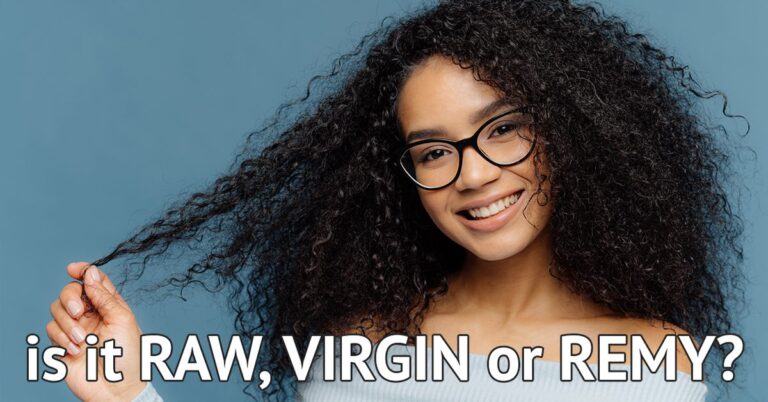Expensive raw hair? When will prices go down?
After the pandemic, prices for 30-inch raw hair bundles increased by about 50%. The average cost for a 30-inch raw hair bundle was about $85, and they’re now sold for about $125 each. People want the prices of hair extensions to return to what they used to be and seem to think that hair vendors are getting greedy. But what’s the truth?

Table of Contents
1. Supply and Demand
If you know anything about business, you understand the relationship between supply and demand in a competitive market.
- If demand is bigger than supply, prices will go up.
- If supply is bigger than demand, prices will go down.
If there’s a product supplier for which there is no simple substitute, they can afford to be greedy and set the price themselves. However, thousands of manufacturers can provide similar products. This makes the hair industry very competitive, meaning it’s mostly supply and demand-driven.

1.1 – SUPPLY – The scarcity of raw hair
Floor hair isn’t that scarce. There’s a surplus of it, so India is willing to export it to other vendor countries. However, there’s a shortage of quality raw hair from all countries. This means that no country is willing to export their raw hair to other vendor countries.
For example, if India has a limited supply of raw hair, India could sell it to Western countries or to China. They can definitely get more money from overseas. So that’s a reason why China or Vietnam couldn’t really source raw hair from India.
That’s why most raw hair in China is of Chinese origin. We don’t have Indian temples, but we still have girls willing to sell their hair for a fair price. There isn’t any data on how many girls are willing, but we can still take an educated guess.
- China has 660 million women. Maybe half is in an acceptable age range.
- Of these 330 million women, only 1 out of 100 might be willing to sell their hair.
- Of these 3.3 million, maybe 10% have hair longer than 24 inches.
- And as it takes close to 5 years to grow 30 inches of hair, there are only 330 thousand donors per 5 years to sell long hair.
- That leaves us with about 65 thousand donors for long hair per year.
It’s a rough estimate as no data is available on this, but it still indicates how scarce long raw hair is. To make matters worse, the strict pandemic measures during the last 3 years definitely didn’t help with the availability.
1.2 – DEMAND – The great demand for long hair extensions
I’ve worked in the hair extension industry for about 8 years now. When I started, most of the demand was for bundles with lengths under 20 inches. But nowadays, many hair extension wearers love long hair. The longer, the better. It’s not uncommon to see people buying 5*30-40 inch bundles for a single wig or installation.
This means that there’s a very high demand for long hair. Combine this with the scarcity, and you can understand why the prices are upward.
If there’s very little hair available, some girls will be willing to sell their hair by offering them more money. Not only this, but with the Russia-Ukraine war, electricity prices have increased considerably. Factories are large electricity consumers, now costing more money to run.

2 – Are vendors greedy?
Many claim hair vendors are greedy, which is why they increase prices. But to understand whether that’s true, you must first learn about the different competition models.
2.1 – Monopolistic VS Competitive Market
Some vendors are unique and aren’t replaceable. A monopolistic market is where one seller is unique and has no major competitors. This allows them to set the prices quite high and can afford to be greedy.
2.1.1 – A monopolistic market leaves room for greed
In China, white people’s extensions are mostly sold wholesale. There are over 30 color variations in about 12 different types of extensions in multiple lengths. Those are about 1.440 variations to keep in stock, and with an average price of around $150 per item, it would easily cost $216.000 to keep a single item of each variation. That’s why manufacturers usually stock the material and custom-make every article for each order. But this usually comes with an MOQ of 1-3kg per variation.
Overseas resellers don’t sell all possible variations. They simply select what they want to keep in stock and go from there. As the MOQ is relatively high, it is difficult for people just starting their hair business. Those who can succeed almost have a monopoly on the market and can charge what they want. That’s why some clients buy our extensions for $150 a piece and resell them for $250-300. It’s good for the seller but not good for the buyer.
And our marketing strategy against that is that we’re an Asian vendor selling white people’s extensions in retail. We can do many customizations relatively quickly, with an MOQ of 50, 100, or 200g. Our prices are much lower and can offer many more variations than overseas resellers can. This really puts us at an advantage.

2.1.2 – A competitive market destroys greedy hair suppliers
However, supply and demand determine prices in a competitive market. Customers want to spend as little money as possible, and competitors want to earn as much as possible. Vendors who get greedy and charge too much will lose many clients. Here are some examples
Closures
Let’s take closures, for example. They take a worker about 10-20 hours to make, and even if you only pay them $2 an hour, it still adds $40 to the buying price of your closure. That’s why China outsourced them to North Korea, where labor is cheaper, but when the pandemic hit, they stopped producing them.
When Chinese vendors ran out of North Korean closures, they had to start producing them themselves. There was a massive shortage of experienced workers, and few factories could produce these lace closures. However, after a year or so, many new factories began producing closures. As time went on and workers gained experience, production times decreased.
There was room to go down in prices and undercut their competitors. This way, they can get many new clients. Prices have gone down by about 20% since then. Those who stuck to the old prices or reduced the quality didn’t do well and downsized or disappeared.
Bundles
Up to the pandemic’s start, we sourced our Orange Line hair extensions from a certain manufacturer. We were close to them, and when I started Bossique, I sometimes worked from their office. Even people started to believe that I was working for them, and I knew most of the hair suppliers who sourced from them.
After the pandemic, along with everyone else, they had a sourcing problem and couldn’t get their hands on the same raw hair. They reduced their quality and ended up 5-10% more expensive than their competitors. I noticed fairly early that the quality had changed, and I stopped selling our 10A+ hair line (now Orange Line). Since then, they’ve lost most of their clients.
Once we found a new manufacturer with better quality and lower prices, we resumed selling Orange Line. But as a manufacturer, they were stuck to what they had. It’s one reason not to buy from a manufacturer.
During this pandemic, they went from being very successful to just surviving. It’s a great example of what happens to a manufacturer that was a bit more expensive than its competitors.

3 – Conclusion
The hair market isn’t perfectly competitive nor fully monopolistic. But in general, most hair suppliers sell similar products at similar prices. Those who can offer something unique and be better than their competitors can afford to be a little bit greedy. But for the majority, being greedy led to the downfall of many suppliers.
Hair bundle prices can only return to what they were before by having a supply larger than demand. You can be assured that supply isn’t getting much better, so the only way for prices to go down is if more people stop using hair extensions for over a year. I don’t see that happening any time soon unless hair extensions are becoming too expensive for the average buyer. But even then, many buyers will switch to lower quality and keep buying hair.
4 – Post Conclusion Rant
We’re kind of at a point where we
4.1 – The costs of size
The bigger Chinese brands of the past (VIP Sister, JP Hair, XBL, GHAIR, Pegasus, Truscend, KBL) aren’t mentioned much in the present. They’re some of the more well-known companies in the Chinese market and are larger than your average vendor. But being famous and increasing in size comes with additional costs:
- Sales employees receive a base salary, commission on their sales, and mandatory health insurance.
- Sales managers receive a commission on top of that.
- While many things in China are cheap, renting an office in any convenient location isn’t.
- Brand familiarity is often achieved by marketing. Marketing isn’t cheap.
- Being famous means selling a lot of scarce long-length hair. Stock will run out quickly, and buying prices tend to go up.
It can easily make larger vendors 10% more expensive than some of their smaller competitors. Many buyers are switching away from these larger hair suppliers, causing some of them to halve their workforce to survive in this bearish market.
4.2 – Why quality appears to be decreasing
The quality of raw hair bundles generally doesn’t live up to their claims. We’re all overpromised on quality. As someone who has tested a ton of manufacturers over the last few years, I can honestly say that quality has gone downhill. But why is that?
People love smooth and silky hair. However, raw hair is actually quite rough. So manufacturers are chemically processing their raw hair to make it smoother and will add silicon to make it silky. While silicon doesn’t have to be bad, chemical processing damages the hair.
Another reason why manufacturers need to process and color their hair is that they mix in lower-quality floor hair. Strands in floor hair have many different colors, giving this very impure shade of black. The chemicals used during processing also remove some of the melanin in hair, and that’s why you will see red or copper-colored strands in processed floor hair.
People should really start to realize that raw hair is supposed to be coarse and not smooth and silky. Manufacturers simply respond to demand and don’t care about changing buyers’ perceptions. If you don’t change, they won’t change.
Many of our articles originate on our Facebook. Follow us there to learn more about the hair industry. You can contact me directly by sending me a message on WhatsApp or iMessage: +86 135 3369 3283.
Are hair vendors being greedy with price increases?
No. Price adjustments are often a response to factors like scarcity, demand, and production costs. It’s a complex interplay in a competitive market. If vendors are greedy, they will lose out to competitors.
Why does the perceived quality of raw hair seem to be decreasing?
Raw hair is in limited supply, and as prices rise, manufacturers are compelled to explore avenues for cost reduction. Unfortunately, this cost-cutting often comes at the expense of quality.





